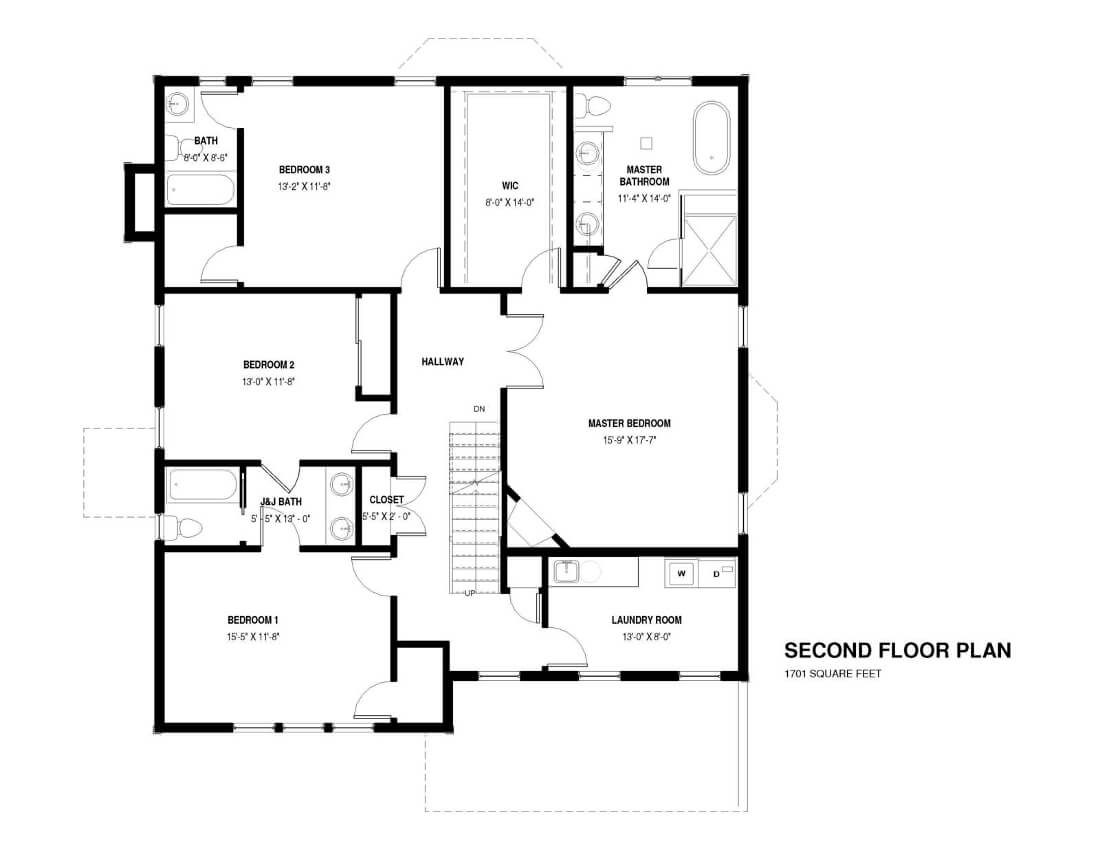Imagine curling up in a cozy armchair by your fireplace with a good book and a cup of hot chocolate, but instead of being on the ground floor, you’re enjoying the warmth and ambiance on the second level of your home. It’s a dream for many homeowners, but can it be a reality? Can you install a fireplace on the second floor, and if so, what are the considerations involved?

Image: floorplans.click
The answer, thankfully, is usually yes, but it comes with its own set of challenges and complexities. Installing a second-floor fireplace requires careful planning, specialized expertise, and a good understanding of your home’s structure. In this comprehensive guide, we’ll delve into the world of upstairs fireplaces, exploring the necessary steps, the pros and cons, and the different types of fireplaces suitable for second-floor installations.
Why Opt for a Second-Floor Fireplace?
The allure of a fireplace on the second floor is undeniable. It not only adds a touch of charm and sophistication to your living space but also offers several practical benefits:
- Enhanced Comfort and Ambiance: A crackling fire creates a soothing ambiance, making your second-floor living area feel more intimate and inviting.
- Increased Home Value: Adding a fireplace to any room is known to boost a home’s market value, and a second-floor fireplace can be a particularly desirable feature for buyers.
- Reduced Heating Costs: A fireplace can serve as an alternative heat source, helping to keep your second floor warmer and potentially reducing your heating bills, especially during the winter months.
- Unique Architectural Feature: A fireplace can become a focal point in your second-floor space, adding visual interest and architectural flair.
The Challenges of Second-Floor Fireplaces
While the benefits are tempting, it’s crucial to understand the challenges associated with installing a fireplace on the second floor:
- Structural Considerations: The weight of the fireplace and its components can strain the floor joists, potentially requiring structural reinforcements or additional support beams.
- Chimney Construction: Extending the chimney from the roof to the second floor can be complex and expensive. It involves cutting through the roof, installing fire-resistant materials, and ensuring compliance with local building codes.
- Fire Safety: Maintaining a safe and efficient fireplace requires careful installation and regular maintenance, including proper venting and fire-stopping materials.
- Cost: Installing a second-floor fireplace is typically more expensive than installing one on the ground floor due to the complexities involved.
Types of Fireplaces Suitable for Second Floors
Not all fireplace types are ideal for second-floor installations. Here are some suitable options:

Image: www.reddit.com
1. Gas Fireplaces:
Gas fireplaces offer the convenience and efficiency of modern technology. They typically require a gas line connection and a vent, which can be easier to install than a traditional chimney. Gas fireplaces produce a realistic flame and are generally considered more user-friendly than other options.
2. Electric Fireplaces:
Electric fireplaces are a popular choice for second-floor installations due to their ease of installation and maintenance. They don’t require chimneys or venting, as they use a heating element to generate heat and simulate a flame effect. Electric fireplaces offer a convenient and cost-effective option, but they tend to be less visually appealing and may not produce the same warmth as traditional fireplaces.
3. Zero-Clearance Fireplaces:
Zero-clearance fireplaces offer a space-saving design, as they can be installed directly against studs or framing. They are often preferred for second-floor installations because they require a smaller footprint and less chimney construction. However, they may necessitate a specialized vent system due to their proximity to combustible materials.
Planning and Installation: A Step-by-Step Guide
If you’re considering a second-floor fireplace, it’s essential to follow a structured approach to planning and installation:
1. Consult with a Professional:
Start by consulting with a licensed and experienced fireplace installer or architect who has experience with second-floor installations. They can assess your home’s structural integrity, evaluate the feasibility of the project, and provide valuable guidance on code requirements and best practices.
2. Determine the Ideal Location:
Choose a suitable location for the fireplace on your second floor, taking into account factors such as structural support, existing framing, and the layout of the room. Ensure there is enough clearance from walls and other combustible materials.
3. Plan for Chimney Construction (if necessary):
If you choose a fireplace that requires a chimney, carefully plan the chimney extension from the roof down to the second floor. Consider the materials, size, and design of the chimney to ensure it complies with local building codes and provides adequate venting.
4. Secure Permits and Approvals:
Obtain the necessary permits from your local building department. This will ensure that your installation meets the safety and code requirements in your area.
5. Install the Fireplace:
Let an experienced professional handle the installation of your second-floor fireplace. They will ensure proper installation of the fireplace unit, chimney, and any supporting structures, following all safety and building codes.
6. Perform Regular Maintenance:
After installation, schedule regular maintenance to ensure the fireplace operates safely and efficiently. This may include cleaning the chimney, inspecting for cracks or damage, and ensuring proper venting.
Can You Put A Fireplace On The Second Floor
Conclusion: Bringing Warmth and Ambiance to Your Second Floor
Installing a fireplace on the second floor is a project that requires careful planning, expert installation, and adherence to building codes, but the rewards can be substantial. You can enjoy the cozy warmth, charming ambiance, and increased home value that a second-floor fireplace can bring. By following these steps and consulting with professionals, you can make your dream of a cozy upstairs haven a reality.





